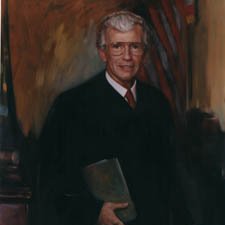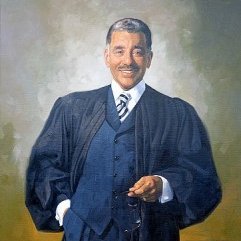And we’ll show you two ways to help. Together, we can be a voice for change and protect Michigan’s land, air, water, public health, and democracy.
This case examined the limits of the Governor’s power to reorganize executive agencies like the Department of Natural Resources (DNR). In 1991, Gov. Engler (R) abolished the legislatively-created DNR and reorganized a new DNR to which he could appoint the chairman of the Natural Resources Commission which governs it. He also abolished numerous citizen advisory boards. Conservation groups challenged this unprecedented consolidation of executive authority, but the unanimous Court found that it did not violate the Michigan Constitution. In this case, it was not up to the Court to change executive authority, but up to Michigan citizens to elect a governor who would use it wisely.
Governor Engler issued two Executive Orders affecting Michigan’s Department of Natural Resources (DNR). First, the Governor transferred all the authority, powers, duties, functions, and responsibilities of the legislatively-created DNR to a “new” gubernatorially-created DNR, giving himself the power to appoint the chairperson who leads the Commission of Natural Resources, the head of the Department. Second, he abolished eighteen boards and commissions that managed the state’s natural resources. One of the orders also established a new Michigan Environmental Science Board within the Department of Management and Budget, which was then given advisory and review power. The House Speaker, other legislators, the Michigan United Conservation Clubs (MUCC), and the Michigan Environmental Protection Foundation (MEPF) challenged Governor Engler’s constitutional authority to issue these orders. The Michigan Supreme Court held that both Executive Orders were constitutional.
In November 1991, Governor John Engler issued Executive Order No. 1991-31, which abolished the existing legislatively-created Department of Natural Resources (DNR) and created a “new” department (still called the Department of Natural Resources). The head of the new department was still the Commission of Natural Resources, as before the change, but the Governor now had the power to appoint the Commission’s chairperson, who would serve in that position at the Governor’s will. The order also abolished eighteen legislatively-established boards and commissions that managed the state’s natural resources. The power those boards and commissions held was instead given to the new DNR created by the Governor.
At the same time, Governor Engler issued Executive Order No. 1991-33. This order established the Michigan Environmental Science Board as an independent, autonomous entity within the Department of Management and Budget. The Board was given the power to advise the Governor, the Commission of Natural Resources, the DNR, and other state agencies about issues that affect the state’s natural resources. The Board was also charged with assisting the Governor in reviewing environmental impact statements.
Before the Order creating the “new” DNR went into effect, the Speaker of the House of Representatives and other legislators filed a complaint in court. They wanted the court to declare that the order had exceeded the Governor’s limited legislative authority under the Michigan Constitution and to stop the order from going into effect. The Michigan United Conservation Clubs (MUCC) and the Michigan Environmental Protection Foundation (MEPF) filed similar lawsuits alleging that the Governor had overstepped his authority. MEPF’s complaint also alleged that Executive Order No. 1991-33 was unconstitutional and unlawful because it violated the rights of Michigan citizens to an open, accessible, and accountable government. The trial court consolidated the three complaints into one case.
The trial court ruled that all of the plaintiffs had standing—the legal right to have their complaints heard by the court. It stopped the Governor from creating the new DNR, finding that Executive Order No. 1991-31 violated the separation of powers clause of the Michigan Constitution because the Governor had infringed on the Legislature’s authority. The trial court did not address the constitutionality of Order No. 1991-33.
The Court of Appeals affirmed the trial court’s determinations, and also considered the validity of Order No. 1991-33. It determined that the Order could not be implemented, because it created a new Science Board to advise the “new” DNR and therefore assumed that Order No. 1991-31 (which created the “new” DNR) was valid when it really was not. The Court of Appeals also decided that the case did not present a “political question” that should not be decided by the courts.
Did two environmental non-profit groups have standing (the legal right) to sue Governor Engler for issuing executive orders that would reconfigure the state’s environmental agencies?
Should the Court refuse to hear this case because it presents a “political question”—a dispute between the legislature and executive—that would be better addressed by those branches of government without getting the judiciary involved?
Did Governor Engler overstep his authority in issuing Executive Order No. 1991-31, which created a new gubernatorially-created Department of Natural Resources?
Is Executive Order No. 1991-33, which established the Michigan Environmental Science Board, unconstitutional?
A unanimous Court first determined that MUCC and MEPF had standing to bring lawsuits against the Governor under a court rule that allows non-profits organized for civic, protective, or improvement purposes to bring an action to prevent the government from spending state funds illegally.
Second, the Court decided that the case did not present a “political question” that would be better resolved by a different branch of government.
Third, the Court held that the Governor had the authority to issue Executive Order No. 1991-31, which created the new DNR under Article 5, Section 2 of the Michigan Constitution, which allows the governor to “make changes in the organization of the executive branch or the assignment of functions among its units which he considers necessary for efficient administration.”
Finally, the Court decided that the Environmental Science Board created by Executive Order No. 1991-33 was valid, because it represented a legitimate exercise of the governor’s constitutional authority.







